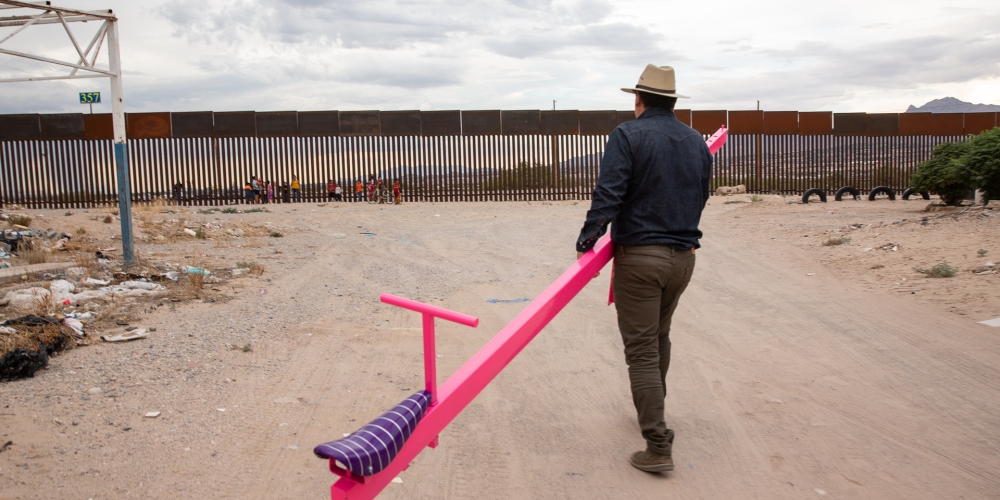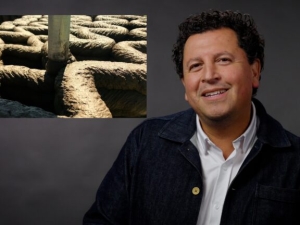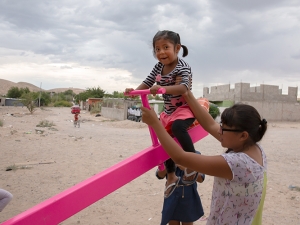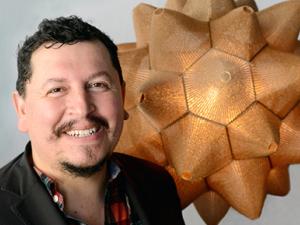

Research Bio
The creative endeavors of Ronald Rael blur the borders between architecture, art, technology, land-based practices, and social justice. He writes books, forms startup companies, advocates for human rights at the U.S.–Mexico border, creates software, invents novel materials and new forms of construction, and designs buildings as an applied research enterprise. His studio is known globally for the project, Teeter Totter Wall, a forty-minute guerilla event that took place on both sides of the U.S. – Mexico Borderwall to bring families and communities together. He co-founded the startup company, FORUST, which rematerializes wood waste via 3D Printing to produce beautiful end-use products and has innovated the processes for the robotic construction of raw earthen buildings. His work can be found in the permanent collections of the Museum of Modern Art, The Cooper Hewitt Smithsonian Design Museum, The London Design Museum, LACMA, The San Francisco Museum of Modern Art, and the Renwick Smithsonian American Art Museum. He is the Chair of the Department of Art Practice and Eval Li Memorial Chair in Architecture at the University of California Berkeley.
Research Expertise and Interest
3D printed buildings, additive manufacturing, earth architecture, mud, artificial intelligence, U.S.-Mexico border wall, arid landscapes, ranching, acequias, alipne deserts, ceramics, rural architecture, ruralism, animation, digital modeling, furry buildings, unnatural materials, rasquachetecture
In the News
Mud and Robots: Why Earthen Architecture Is the Future
Teeter totters as activism: How the border wall became a playground
A New Recipe for Construction
Bakar Fellow Ronald Rael is advancing a type of 3-D printing that could add more beauty, variety and sustainability to building designs.
Featured in the Media
College of Environmental Design Professor Ronald Rael’s work "reintroduces humankind’s most technologically sophisticated material, the ground beneath our feet, as a building material to solve the global climate crisis and housing crisis."
In this episode of Relevance of Place, Ronald Rael, Chair of Art Practice and Eva Li Memorial Chair in Architecture, shares how Indigenous perspectives on land and materials shape his innovative work, emphasizing the interplay between art, design, and site history.
Relevance of Place (above) is an online series at Tippet Rise Art Center, Fishtail, Montana, where art, music, architecture, and nature converge to elevate the human experience. Hosted by Shannon Jackson, Chair of History of Art and Hadidi Professor of Rhetoric & Theatre, Dance, and Performance Studies, the series unites artists, architects, and thinkers to explore the ethics, aesthetics, and significance of place—locally and globally.
A collection of fuchsia seesaws stationed across the US-Mexico border wall have won a prestigious design award in the UK for their innovation in building bridges across the communities. The toy's creators, Ronald Rael, a professor of architecture at the University of California, Berkeley, and Virginia San Fratello, an associate professor of design at San José State University, said they hoped the design would encourage people to question the effectiveness of borders and help to heal divisions. For more on this, see our press release at Berkeley News.
Ronald Rael was interviewed for PBS about his Conejos County project.



